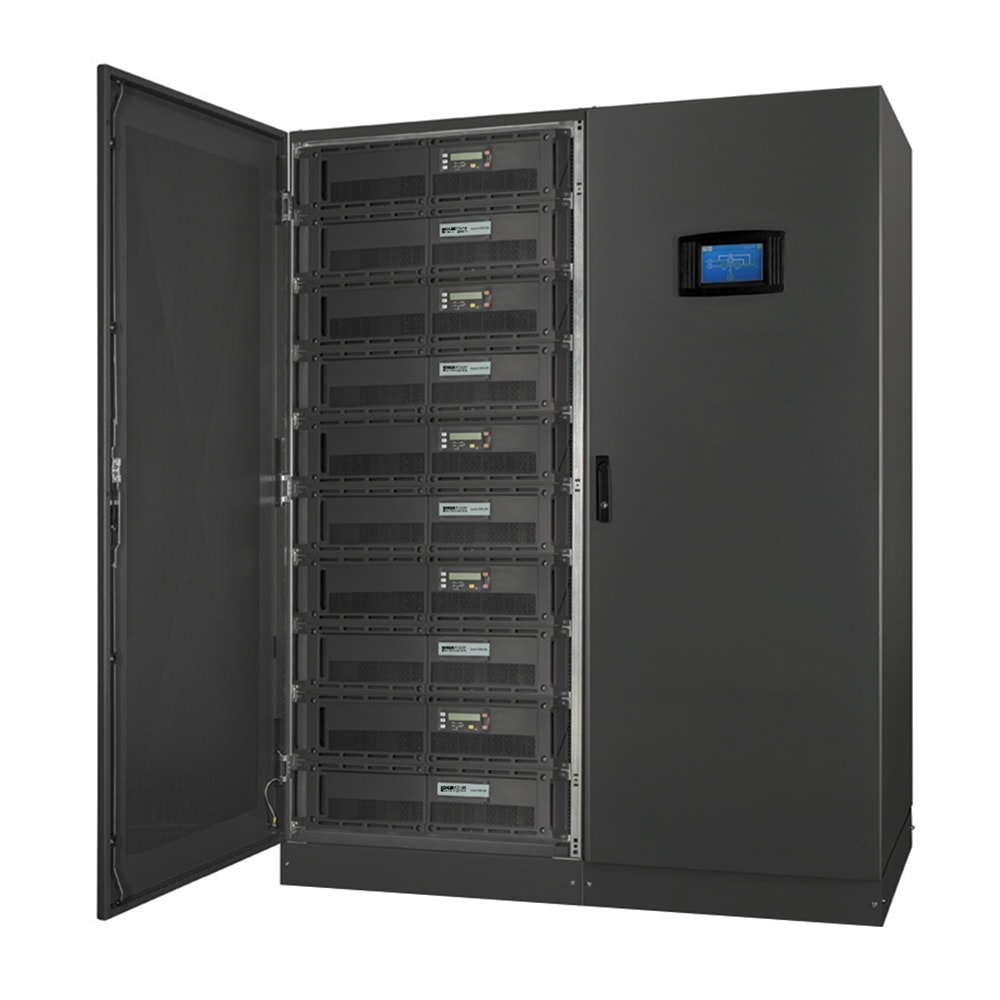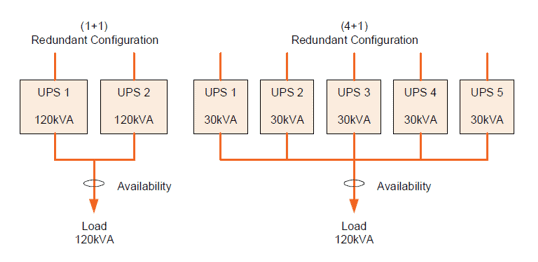Threats to our mains electrical supply like the recent August 9th UK national grid blackout highlight the essential need for effective UPS protection. However, not just any UPS will do – your solution should offer the best possible availability together with optimum power efficiency.
Scalable UPS technology is an attractive answer for many users. In this article, Alex Emms, Operations Director at KOHLER Uninterruptible Power, discusses the circumstances under which scalability can contribute to availability and uptime. The discussion also touches briefly on how it can improve UPS energy efficiency.
What does availability mean?
Before we can see how scalability can influence availability, we need to understand exactly what the term means. Certainly, as power problems are the largest single cause of computer downtime, increasing power availability is the most effective way of increasing overall systems availability. To understand how availability impacts users, we can describe it as the amount of time per year that a system is operational and performing as it should be. More formally, it is defined as
Where A = Availability
MTBF = Mean Time Between Failures
MTTR = Mean Time to Repair
From this, it’s clear that availability can be improved both by increasing MTBF, and by reducing MTTR. However, before examining this more closely, let’s return to the issue of scalability.
Scalability
While early double-conversion online UPSs used internal step-up transformers, the industry has generally moved towards transformerless technology, with ever-growing power capacities becoming available.
Transformerless technology has an intrinsic advantage; it significantly improves overall UPS energy efficiency, increasing it by around 5% to yield a substantial reduction in heat loss and energy costs. However, its other key advantage is that allows a considerable reduction in UPS size and weight, to an extent that UPSs can be implemented as relatively small and manoeuvrable modules rather than as large, floor-standing units. These modules can be simply plugged into a system rack; it’s easy to build a ‘right-sized’ UPS system using such an approach, so that its capacity closely matches the load requirement. By keeping the modules adequately loaded, energy efficiency is optimised. Then, as and when the load grows, the UPS can be readily scaled by adding more modules. Energy efficiency is preserved, and there’s no need to invest in the excessive capacity that’s often inevitable with monolithic systems.
Meanwhile, now that we’ve discussed the concept of modules and their ‘incremental’ property, we can look at their impact on availability.
How scalability can improve availability
We saw that availability depends on both MTBF and MTTR; going modular can improve each of these factors.
Firstly, using modules allows efficient configuration of systems with N+1, or, if required, N+N redundancy. The redundant element can be achieved just by plugging in extra modules, without unwanted or excessive extra capacity. And, by adding a level of redundancy, a three- to six-fold improvement in MTBF can be gained.
However, reducing MTTR is also critical to availability improvement. Hot swap modular systems facilitate this, because they allow a faulty module to be removed from the UPS rack, without interrupting power to the load, and replaced with a working unit – a process that can be completed in half an hour or less, compared with a time of more typically six hours that would be needed to take a monolithic UPS offline and repair it in situ.
An example will show how these factors can translate into availability levels for the UPS. Fig.1 shows a 120kVA load, supported alternatively by a 1+1 system, or a 4+1 system.
Fig.1: 1+1 and 4+1 UPS systems supporting a 120kVA load
Table 1 shows how UPS availability is affected by the choice of configuration. It also makes some other key points; the highest availability comes from using a 4+1 rack-mounted modular solution. And this is entirely due to the modular system’s hot swap capability, which allows MTTR to be reduced from six hours to half an hour. Merely going from 1+1 to 4+1 configurations using standalone systems actually reduces MTBF, and availability, because of the increase in components associated with the change.
Table 1: Impact of modular topology on UPS availability
Conclusion
This article has shown how designing a UPS for scalability also brings energy-saving and availability benefits. Availability is improved in two ways; firstly, because implementing redundancy becomes efficient and easy, and, secondly, if the modules used for scaling are hot-swappable, then MTTR can be reduced. These two benefits can be represented in a Power Availability chart – see Fig. 2. This shows that by applying these two concepts to a standard UPS that has neither redundancy nor hot-swappability, UPS power availability moves from ‘Normal’ through ‘High’ to ‘Very high’.
Fig.2: Power Availability chart
Finally, it’s worth noting that the benefits of scalability now extend to very high power levels. The KOHLER PW 9500DPA, for example, supports capacities of up to 3 MW through a combination of vertical scaling (adding modules to racks) and horizontal scaling (adding more racks).









